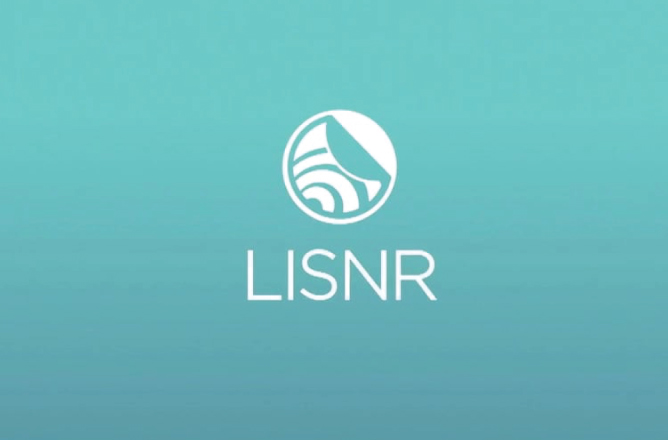When Wi-Fi Won’t Work, Let Sound Carry Your Data

If you’ve ever struggled to pair your phone with a Bluetooth speaker or set up a wireless printer, you know that it’s often easier to connect to a server halfway around the world than to a gadget across the room. That’s a problem as we increasingly use our phones to pay for stuff, unlock doors, and control everything from televisions to thermostats. No one wants to wait for coffee because the cash register can’t detect their phone, or shiver in the cold because their watch is trying to connect to their neighbor’s door lock instead of their own.
Multiple wireless technologies have emerged in recent years to tackle this problem, including Bluetooth, LoRa, and NFC. These technologies are all based on radio frequencies. But a growing number of businesses, from Ticketmaster to Google to nuclear-power plants, are turning to a simpler solution: sound.
Ticketmaster is working with Cincinnati-based startup Lisnr to create audio-based digital tickets. So instead of using a printed ticket or a QR code on a phone to gain entrance to an event, your phone plays a short, inaudible sound. It’s a bit like having your phone whisper a secret password to a digital assistant, like Apple’s Siri or Amazon’s Alexa, to gain access to an event.
Why Sound
Justin Burleigh, VP of product at Ticketmaster, explains that the company already enables event goers to use NFC, the technology that powers Apple Pay, to gain admission at venues that use the company’s Presence software. But, he says, about 20 percent of Ticketmaster’s customers don’t have phones that support NFC. Bluetooth is nearly ubiquitous, but requires each phone to pair with the ticket-reading device. That would be a challenge when 1,000 people crowd around a gate at a venue. But every smartphone can play audio—and nearly every tablet has a microphone, sparing venues from having to buy expensive new equipment.
Using sound to transmit data is nothing new. Everything from bird chirps to human language can be considered a form of data-over-sound. It’s old hat for computers too: the squeal of a dial-up modem is actually digital data encoded into sound and then interpreted by another computer.
Unlike dial-up modems, this new wave of data-over-sound technologies transmits messages over the air, instead of over wires, even if you can’t always hear the audio frequencies they use.
Here’s how it works: One device translates a chunk of data, such as a block of text, into a sequence of sounds that can be decoded by another device. The receiving device processes the audio and converts it back to the original form.
The procedure is a bit like using Morse Code to transmit a message, but more complex. Using Morse Code, you can translate text into a series of audio pulses that someone else can decipher. It would take a long time to send a complex message that way, so instead of using a single tone, as Morse Code does, programmers use a range of audio frequencies to pack more information into less audio. Developers have to carefully select the frequencies, and tune their software to filter out noise so that applications can detect and interpret data signals even in noisy places, like concert venues or sports arenas. Companies like Lisnr, meanwhile, are working on compression techniques to push more data over sound waves more quickly.
Even using compression, sound waves can only carry a limited amount of data compared to a Wi-Fi connection. So today developers use the technology primarily to transmit small files, such as a digital ticket.
Google uses audio technology to pair phones with its Chromecast video devices. Using Bluetooth, your phone might not be able to distinguish the smart TV you’re watching from a TV in another room, or in a neighboring apartment, says Google software engineer Brian Duff. Using audio frequencies that won’t pass through walls, Google can Google offers this audio technology as part of Nearby, a software kit that helps Android developers add proximity-based features to their apps. Using this technology, other hardware makers could use audio to pass an introductory message between your phone and another device, kicking off the digital “handshake” that pairs it with your phone before switching to a higher bandwidth radio-based technology to stream media.
Audio’s ubiquity allows users to connect different types of devices without worrying about which technologies those gadgets support. For example, videogame maker Activision Blizzard uses sound-based technology developed by a UK company called Chirp to enable players of its game Skylanders Imaginators to move character data between a mobile app and a videogame console like a PlayStation or Xbox. The data could be transferred via the internet, but developers wanted to use technology that is simple enough for children and works offline.
Data-over-sound is also useful in places where radio frequencies can’t be used, for practical or legal reasons. For example, UK-based EDF Energy uses Chirp’s technology in parts of its nuclear-power stations where radio transmissions are prohibited. “We are developing a way to connect mobile workers on tablet devices, reporting their progress through work, and also to connect sensors to make it easier for an engineer to monitor a plant when performing fault finding,” says EDF Energy project manager Dave Stanley.
Read the full story at Wired.